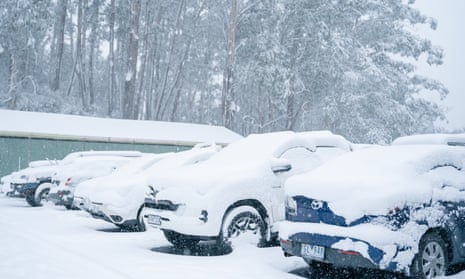Discover the Ideal Periods of Year to Experience Snow In Australia In Person
Wiki Article
Recognizing the Significance of Snow in Australia for Agriculture and Tourist
While Australia is commonly connected with sun-kissed beaches and dry outback, it also flaunts a riches of snowy towering areas. As we investigate this shocking crossway, the potential influence of changing climate patterns on Australia's snowfall and its succeeding impacts become an engaging focus.
The Unforeseen Snowfall: Australia's Alpine Regions
When winter months capes the globe, Australia's Alpine regions don a white mantle of snow, a spectacle that seems almost paradoxical in this dominantly sun-baked land. As opposed to the stereotyped photo of Australia as a land of deserts and coastlines, these regions provide a unexpected and stunning contrast. The Australian Alps, stretching throughout New South Wales, Victoria, and the Australian Resources Region, obtain more snowfall than Switzerland. This unforeseen winter wonderland supplies an one-of-a-kind ecosystem, giving an environment for a number of indigenous varieties and a snowy play ground for winter season sporting activities lovers. The yearly snowfall, although not as bountiful as in some nations, is a vital facet of Australia's climate variety and plays a substantial function in the country's farming methods and tourist market.Winter season's Bounty: Snow's Contribution to Australia's Water Resources
Regardless of its rarity in the more comprehensive landscape of Australia, snow in the Towering areas plays an essential role in the country's water resources. This is particularly vital for Australia, a continent regularly plagued by droughts. Without the bounty of winter months snow, Australia's water sources would certainly be considerably strained, influencing both the setting and the populace.White Covering, Environment-friendly Area: The Influence of Snow on Australian Farming
Although less visible, the influence of snow on Australian farming is significant. Snowfall in the high nation serves as an all-natural type of watering, slowly melting and supplying a stable water to lower-lying farmland. This water-rich atmosphere cultivates the growth of robust crops, adding to the nation's agricultural productivity. Snowfall enhances soil health and wellness by introducing moisture and capturing nutrients, which are progressively released as the snow melts. This procedure enhances the dirt, cultivating the growth of much healthier, much more resistant plants. Furthermore, snow cover acts as a safety covering, insulating the ground versus extreme wintertime temperatures that can or else harm crops. Therefore, the function of snow in Australian agriculture is both diverse and important.
Cold Cash Money: Snow Tourist and Its Economic Importance in Australia
While the worth of snow to Australian farming is typically underestimated, its contribution to the country's tourism field is unquestionably significant. The snow-laden optimals of Australia's alpine regions draw in a flurry of vacationers every winter season, adding millions to the national economic climate. Hence, the financial significance of snow tourism in Australia prolongs much past the inclines.Future Projection: Climate Modification and Its Possible Effects on Australia's Snowfall
As the world comes to grips with the reality of environment adjustment, so also should Australia contemplate its potential results on the country's snowfall. Current scientific designs predict a decline in Australian snowfall, with potentially extreme effect on both farming and tourism. In some areas, the snow period might be reduced by approximately 80 days by 2050. Such modifications endanger the viability of Australia's ski industry, which contributes substantially to the regional economic situation. Similarly, less snowfall could also impact the country's agricultural market, as snowmelt plays a critical duty in sprinkling crops. The possible effects of these changes underline the necessity of climate change reduction initiatives, both in Australia and globally.Conclusion
In verdict, snow is a pivotal element of Australia's agricultural and tourism fields. The impending risk of climate modification raises issues concerning the future of Australia's snowfall patterns, potentially interfering with these significant financial sectors.

When winter capes the world, Australia's Alpine regions wear a white mantle of snow, a spectacle that appears nearly paradoxical in this dominantly sun-baked land.In spite of its rarity in Snow In Australia the more comprehensive landscape of Australia, snow in the Alpine areas plays a vital role in the country's water resources. Without the bounty of winter snow, Australia's water resources would be substantially stressed, impacting both the population and the environment.
Therefore, the economic significance of snow tourism in Australia expands far beyond the inclines.
In conclusion, snow is an essential component of Australia's farming and tourist sectors. Does Australia Get Snow.
Report this wiki page